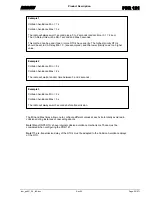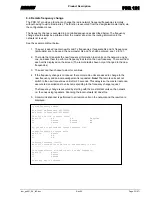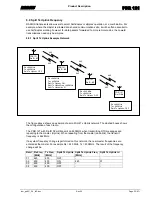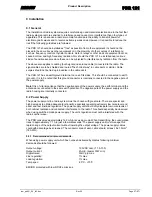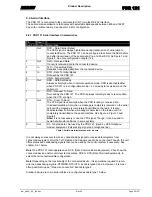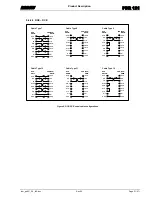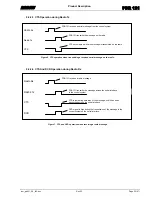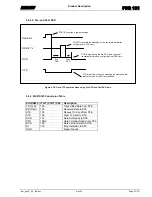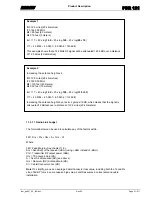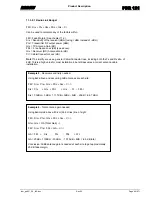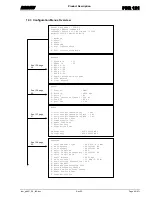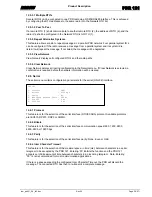
RADIUS
Product
Description
PDR 121
iom_pdr121_04_r02.doc
Rev 02
Page 36 (67)
11 Radio Networking
This chapter general radio network equipment, terms and how to calculate a “Radio Link Budget”.
This information can be useful when planning a radio network, but is not essential for using the
PDR 121.
11.1 Antennas
Selecting the correct antennas can be crucial for the communication links. Design of antennas and
antenna systems include quite complicated physics, mathematics and circuit theory. However,
below follows some basics that can be helpful in understanding the principles of antennas in a
radio network.
11.1.1 Antenna Gain
The antenna gain is a measure of how well the antenna will send or pick up a radio signal. The
gain of an antenna is measured in decibels-isotropic (dBi) or in decibel-dipole (dBd). The decibel is
a unit of comparison to a reference. The letter following the "dB" indicates the reference used. The
dBi is a unit measuring how much better the antenna is compared to an isotropic radiator.
An
isotropic radiator is an antenna transmitting signals equally in all directions, including up and
down (vertically). An antenna of this type has 0dBi gain. (An isotropic antenna is only a theoretical
model that has no real design).
The higher the decibel number is, the higher the gain will be of the antenna. For instance, a 6dBi
gain antenna will receive a signal at a higher level than a 3dBi antenna. A dBd unit is a
measurement of how much better an antenna performs against a dipole antenna. As a result a
dipole antenna has a 0dBd gain. However a dipole antenna typically has a 2.4dBi gain as dipole
antennas have more usable gain than isotropic radiators. Any dBi measurement may be converted
to dBd by adding 2.4.
The only way to increase antenna gain is to concentrate the antenna signal radiation / reception
pattern - the electromagnetic field - in a smaller area than the omni-directional pattern of an
isotropic antenna. This can be compared to using a pair of binoculars. You will see the object
better, but you will see a smaller area.
Concentrating and focusing the EM field, creates gain that is then retrieved by the physical design
of the antenna.

